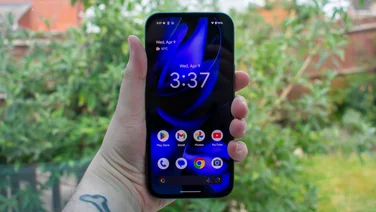To help us provide you with free impartial advice, we may earn a commission if you buy through links on our site. Learn more

This year’s Mobile World Congress seems to be the year for fledgling smartphone operating systems – we’ve already seen FireFox OS but now it’s the turn of Finnish manufacturer Jolla. It has its own custom Sailfish OS, which is a continuation of Nokia’s now defunct Meego – fitting, considering the company is comprised of former Nokia developers. It was running on the self-titled Jolla smartphone, and we’ve been trying it out in order to bring you some first impressions.

Sailfish OS
Sailfish in its current form is a custom-built smartphone operating system based on Linux, along with code heritage from the Meego OS last used on Nokia’s N9 smartphone – arguably a handset that was ahead of its time. It is still very much a work in progress, having only recently reached version 1.0, but it has already been shown working on existing Android handsets and is now available on its own unique hardware – more on that below.
The swipe gesture-based navigation feels alien when coming from Android; there’s no onscreen menu buttons or hardware keys to return to the home screen or switch between apps. If you’ve used Blackberry’s BB10 operating system, however, you’ll feel right at home. A double-tap will wake the screen, much like LG’s G2, while a swipe in from the left of the screen will send you back to the previous menu or page. Swipe from the bottom and waiting notifications are displayed. Swiping down from the top will close the currently open app and return you to the home screen, where you can pin recently opened apps for quicker access. Scrolling down reveals a number of pre-installed apps, including a web browser, phone dialler, messaging app, email client, media gallery and maps app.


Jolla phone
The phone itself is a fairly mid-range device; it has a 4.5in, 960×540 resolution display, dual-core Qualcomm Snapdragon 400 chipset running at 1.4GHz, 1GB of RAM, 16GB of onboard storage with microSD card supporT and an 8-megapixel rear camera. Were it running Android it would be the definition of mid-range, but it’s ideally suited to test the waters for Sailfish.



Unlike almost everything else here at MWC, you can actually buy a Jolla handset today; it’s available online through the Jolla shop. With shipping and handling, you should expect to pay £340. That’s an awful lot to ask for a fledgling operating system running on mid-range hardware, but unless you’re prepared to hack your existing Android device, or wait for Jolla to release its forthcoming Android launcher later in the year, it’s currently the only way to experience Sailfish OS on a smartphone.




